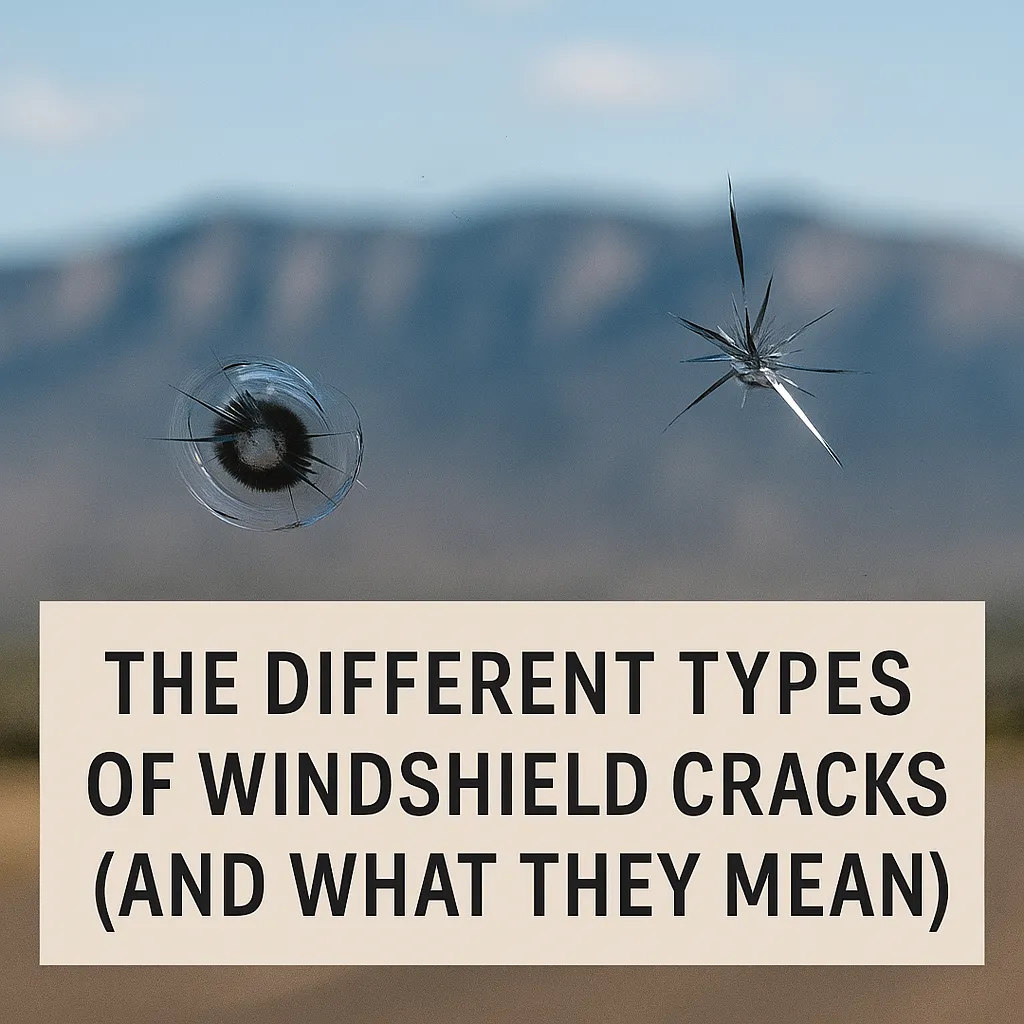
The Different Types of Windshield Cracks
The Different Types of Windshield Cracks (and What They Mean)
When you’re driving through Albuquerque — whether it’s along I-40 near Louisiana Blvd, down Rio Grande Blvd, or heading toward Northeast Heights — your windshield is more than just glass. It’s a critical safety feature that protects you, your passengers, and the structural integrity of your vehicle.
But what happens when that glass takes a hit? For many drivers, a crack starts small, just a speck from flying gravel near Expo New Mexico or a chip from sudden debris on Tramway. Then, seemingly overnight, it spreads. Suddenly, you’re wondering: Is this repairable, or am I looking at a full replacement?
As a veteran-owned auto detailing and glass repair company in Albuquerque, RND Auto Detailing and Glass Repair LLC takes windshield damage seriously. Every type of crack tells a story about your safety, visibility, and your car’s long-term health.
This in-depth guide covers:
The most common types of windshield cracks and chips
What each one means for your driving safety
How Albuquerque’s climate affects damage progression
When you should repair, and when you must replace
Why Windshield Cracks Matter in Albuquerque
It’s tempting to ignore that little chip or hairline crack. But here’s why that’s a mistake in New Mexico:
Safety first: Your windshield provides up to 60% of structural support in a rollover accident. A weakened windshield puts you at risk.
Visibility issues: Cracks distort light, especially during sunrise and sunset commutes across Uptown Albuquerque. Dust storms add glare that worsens visibility.
Climate stress: Albuquerque’s blazing sun and sudden temperature swings (hot afternoons followed by cool desert nights) make cracks expand rapidly.
Road conditions: From gravel patches near North Valley to construction debris along Central Ave, local roads throw plenty at your glass.
Ignoring damage means you’re not just risking a bigger repair bill; you’re putting your safety on the line.
The Most Common Types of Windshield Cracks

1. Bullseye Crack
Appearance: A circular, dartboard-like impact with a dark center.
Cause: Rocks or debris striking at high speed — common along I-40.
Risk: Weakens quickly, often spreading in concentric circles.
Repairability: Usually repairable if caught early, but Albuquerque dust can contaminate the crack, lowering repair success.
2. Star Break
Appearance: A central impact point with cracks radiating outward like a star.
Cause: Sharp debris striking at an angle.
Risk: Each “arm” of the star acts as a stress point, spreading easily with road vibrations.
Repairability: Small star breaks can be filled, but larger ones typically require replacement.
3. Combination Crack
Appearance: A mix of bullseye and star break.
Cause: Larger impacts — think debris from a semi on I-25 or heavy gravel near Sandia High School.
Risk: High chance of spreading; difficult to stabilize.
Repairability: Often requires replacement.
4. Edge Crack
Appearance: Starts within 2 inches of the windshield’s edge, running inward.
Cause: Stress from frame pressure or impact near the perimeter.
Risk: Extremely dangerous because it weakens the windshield’s bond with the car body.
Repairability: Almost always requires full replacement.
5. Floater Crack
Appearance: Crack starting in the middle of the windshield, away from edges.
Cause: Direct impact in the center of the glass.
Risk: Can grow in multiple directions, obstructing line of sight.
Repairability: Repairable if under 6 inches; otherwise requires replacement.
6. Stress Crack
Appearance: Crack with no visible impact point.
Cause: Rapid temperature changes — like a blazing hot windshield suddenly cooled by a monsoon rain.
Risk: Indicates structural weakness; spreads fast under heat.
Repairability: Usually requires replacement.
7. Chip (Stone Break)
Appearance: Small nick where debris chipped the surface.
Cause: Flying gravel or small rocks.
Risk: Harmless at first, but expands into long cracks in Albuquerque heat.
Repairability: Easy to repair if treated right away.
8. Long Crack
Appearance: Over 6 inches in length, sometimes stretching across the windshield.
Cause: Untreated chips left to spread over time.
Risk: Blocks visibility and compromises glass integrity.
Repairability: Not repairable; replacement required.
9. Half-Moon Crack
Appearance: Semi-circular, like a half bullseye.
Cause: Glancing impact from rocks or road debris.
Risk: Can spread, especially in Albuquerque’s heat.
Repairability: Sometimes repairable if small and addressed early.
What Happens If You Ignore a Windshield Crack?
In Albuquerque’s climate, cracks rarely stay small. Here’s what happens if you put off repairs:
Worse visibility - glare, light distortion, and dust buildup.
Bigger cracks - a tiny chip can become a foot-long crack in days.
Weaker safety - reduced roof support during accidents.
Higher cost - a $75 repair turns into a $300+ replacement.
Potential tickets - in New Mexico, driving with an obstructed view can earn you a citation.
Repair vs. Replacement: How to Decide
Repair is possible when:
Damage is under 6 inches
Crack is not at the edge
Impact is not directly in the driver’s line of sight
Replacement is necessary when:
Crack exceeds 6 inches
Glass integrity is compromised
Damage obstructs visibility
At RND, we’ll always guide you honestly. If a chip can be repaired, we’ll save you money. If safety requires replacement, we’ll tell you upfront.
Albuquerque Climate: The Silent Enemy of Windshields
New Mexico’s weather makes cracks worse:
UV exposure: Constant sun heats the glass unevenly.
Dust storms: Fine grit works its way into cracks.
Temperature swings: Hot afternoons + cool nights = expansion stress.
Highway hazards: Loose gravel and road debris make new damage common.
FAQs for Albuquerque Drivers
Q: Can I drive with a cracked windshield?
Yes, but it’s risky. Any crack in your line of sight can get you ticketed and reduces safety in an accident.
Q: How fast do cracks spread in Albuquerque?
Very fast. Sun and dust accelerate damage within days.
Q: Can ceramic coatings protect against cracks?
They help resist water spots and sun damage but don’t prevent chips from rocks or debris.
Q: Does insurance cover windshield replacement?
Many Albuquerque drivers have coverage — we help with the claims process.
Why Choose RND Auto Detailing & Glass Repair
When you need auto glass service in Albuquerque, here’s why locals trust us:
Veteran-owned precision: We approach every repair with discipline and integrity.
Local expertise: We understand New Mexico’s roads, climate, and conditions.
Full-service care: From detailing to glass, we protect both safety and pride of ownership.
Trusted reputation: We guarantee our work, no cutting corners, ever.
Call Today for Trusted Service
If you spot a crack or chip, don’t wait until it spreads. Albuquerque’s sun, dust, and highways will make it worse quickly.
📍 Visit us at:
RND Auto Detailing and Glass Repair LLC
12910 Central Ave SE, Albuquerque, NM 87123
📞 Phone: (505) 312-2455
📧 Email: [email protected]
👉 Call today or stop by our shop just off I-40 at Central and Tramway for trusted veteran-owned service.
